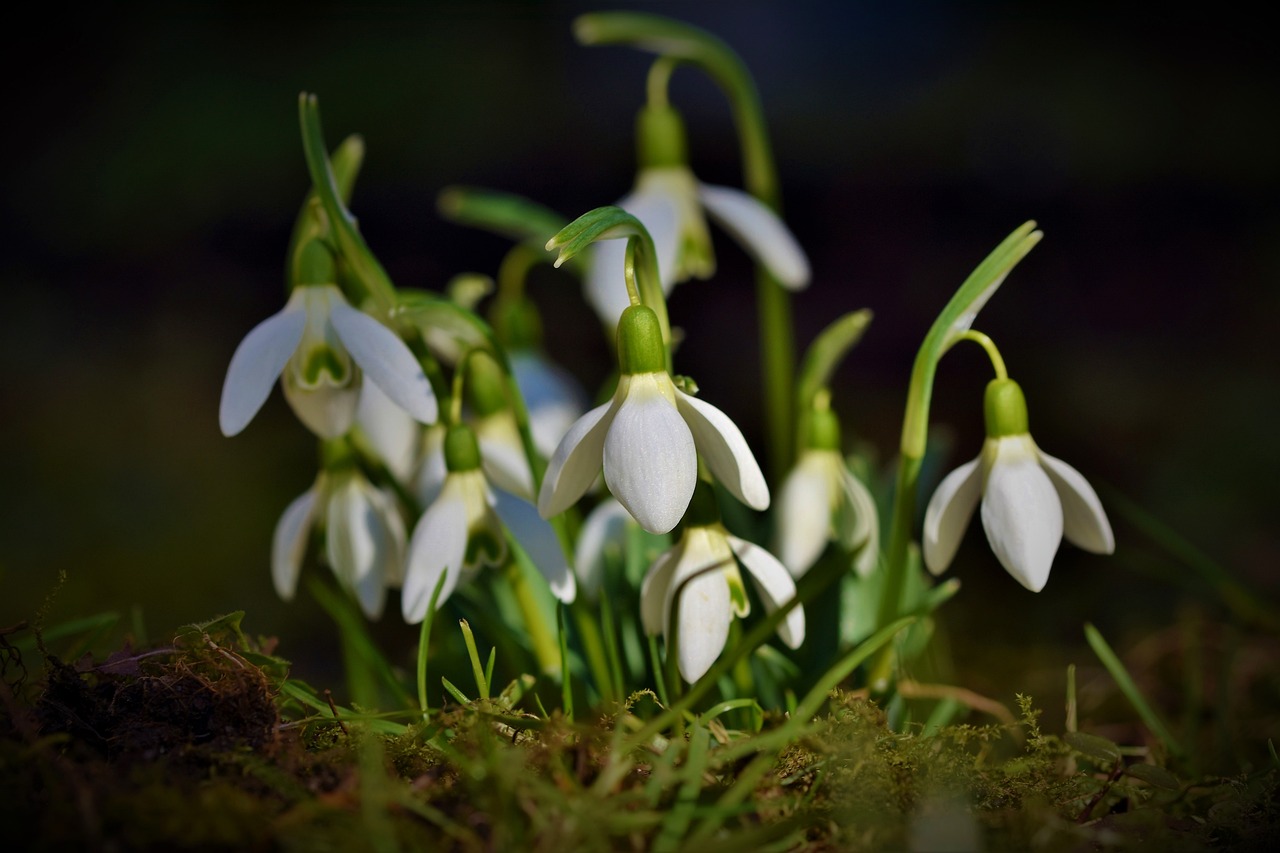The Japanese Snowbell tree (Styrax japonicus) typically exhibits a moderate growth rate, averaging about 12 to 24 inches per year under optimal conditions. This makes it a favorable choice for ornamental gardening.
Understanding the Japanese Snowbell Tree
The Japanese Snowbell tree is renowned for its beautiful, drooping white flowers and attractive foliage. This deciduous tree is native to East Asia and has gained popularity in gardens across the United States and other regions. Its graceful appearance and fragrant blossoms make it a desirable choice for landscape enthusiasts.

In terms of size, the Japanese Snowbell can grow to be between 20 to 30 feet tall and about 15 to 25 feet wide. Its growth rate can vary based on several factors, including soil quality, climate, and care practices. Gardeners appreciate its moderate growth as it allows for manageable maintenance while still providing significant ornamental value.
Growth Conditions
To ensure healthy growth, the Japanese Snowbell tree requires specific conditions. Here are some critical factors that influence its growth rate:
- Soil Type: The tree thrives in well-drained, loamy soils enriched with organic matter.
- Sunlight: It prefers partial shade to full sun. However, too much direct sunlight can lead to leaf scorch.
- Watering: Regular watering is essential, especially during dry spells. The soil should remain consistently moist but not waterlogged.
- Fertilization: A balanced fertilizer applied in early spring can support healthy growth and blooming.
Growth Rate Details
The growth rate of the Japanese Snowbell tree is considered moderate compared to other ornamental trees. Understanding this growth pattern can help gardeners plan the layout of their gardens effectively. On average, during the first few years, the tree may grow more quickly as it establishes its root system. After that initial phase, the growth rate may stabilize.

Here is a summary of the typical growth stages of the Japanese Snowbell tree:
| Age (Years) | Height Growth (Inches) | Comments |
|---|---|---|
| 1 | 12-24 | Establishing root system; rapid growth phase. |
| 3 | 24-36 | Continued healthy growth; beginning of branching. |
| 5 | 36-48 | Growth rate stabilizes; tree begins to mature. |
| 10 | 48-60+ | Mature growth; full height achieved. |
Factors Affecting Growth Rate
The growth rate of the Japanese Snowbell can be influenced by various environmental and management factors. Here are some of the most significant:
- Climate: The tree grows best in USDA hardiness zones 5 through 8, where winters are cold enough for dormancy but not extreme.
- Pests and Diseases: Regular monitoring for pests such as aphids and diseases like powdery mildew can prevent stunted growth.
- Pruning: Proper pruning helps maintain shape and encourages better air circulation, which can enhance growth rates.
Caring for the Japanese Snowbell tree involves understanding its needs and monitoring its environment. By doing so, gardeners can enjoy the beauty it brings as it matures over time.

Conclusion Implication
The Japanese Snowbell tree offers a unique combination of aesthetic appeal and manageable growth. By providing optimal conditions and care, gardeners can successfully cultivate this lovely tree in their ornamental gardens, enjoying its beauty for years to come.
Planting the Japanese Snowbell Tree
Planting the Japanese Snowbell tree requires careful consideration to ensure successful establishment and growth. Selecting the right location and preparing the planting site can significantly influence the tree’s development. Here are key steps to follow when planting:
Site Selection
Choosing an ideal location is crucial for the growth of the Japanese Snowbell tree. Consider the following factors when selecting a site:

- Sun Exposure: Aim for a spot that receives partial shade or full sun. Avoid areas with intense, direct sunlight for prolonged periods.
- Space: Ensure there is enough space for the tree to grow to its full size without obstruction from buildings or other plants.
- Drainage: Look for well-drained soil to prevent root rot. Avoid low-lying areas where water may accumulate.
Preparation of Planting Site
Before planting, prepare the site adequately to promote healthy growth. Follow these steps:
- Clear the Area: Remove any weeds, grass, or debris from the planting site.
- Soil Testing: Conduct a soil test to determine pH and nutrient levels. The ideal pH for Japanese Snowbell trees ranges from 6.0 to 7.0.
- Amend the Soil: Incorporate organic matter, such as compost, into the soil. This improves drainage and nutrient availability.
Planting Process
Once the site is prepared, it is time to plant the tree. The following steps outline the planting process:
- Dig a Hole: Dig a hole that is twice as wide and as deep as the root ball of the tree.
- Position the Tree: Place the tree in the center of the hole. Ensure that the top of the root ball is level with or slightly above the surrounding soil.
- Backfill: Fill the hole with soil, gently packing it down to eliminate air pockets. Water thoroughly after backfilling to help settle the soil.
- Mulching: Apply a layer of mulch around the base of the tree to retain moisture and suppress weeds. Keep mulch a few inches away from the trunk.
Caring for Young Trees
Once planted, young Japanese Snowbell trees require special attention to ensure they establish well. Here are some care tips:
Watering Schedule
A consistent watering schedule is vital during the first few years after planting. Newly planted trees need sufficient moisture for root development. Follow these guidelines:
- Frequency: Water deeply once or twice a week, depending on rainfall and soil conditions.
- Signs of Stress: Monitor leaves for wilting or browning, which may indicate a need for more water.
Fertilization
Proper fertilization supports healthy growth in young trees. Consider these points when fertilizing:
- Timing: Apply a balanced fertilizer in early spring as growth resumes.
- Amount: Follow package instructions to avoid over-fertilization, which can harm young trees.
Pest and Disease Management
The Japanese Snowbell tree may face threats from various pests and diseases. Early detection and management are crucial for maintaining tree health. Common issues include:
- Aphids: Small insects that can weaken trees by sucking sap. Monitor leaves for clusters and treat with insecticidal soap if necessary.
- Powdery Mildew: A fungal disease that appears as white powdery spots on leaves. Ensure adequate air circulation and avoid overhead watering to minimize risk.
Regular inspections of foliage and branches can help catch issues early, ensuring your Japanese Snowbell tree remains healthy as it grows.
Pruning Techniques
Pruning is essential for shaping and maintaining the health of your Japanese Snowbell tree. Proper techniques can enhance air circulation and promote optimal growth. Here are some pruning tips:
- Timing: Prune in late winter or early spring before new growth begins.
- Focus on Dead or Diseased Wood: Remove any dead, damaged, or diseased branches to improve overall health.
- Aim for Structure: Shape the tree by selectively thinning out crowded branches to create an open canopy.
With appropriate planting, care, and maintenance, your Japanese Snowbell tree will flourish, enhancing your garden’s beauty for years ahead.
Seasonal Care for the Japanese Snowbell Tree
Caring for the Japanese Snowbell tree throughout the seasons is essential to ensure its health and growth. Each season presents unique challenges and opportunities for maintenance. Understanding what tasks to prioritize at different times of the year can help promote a thriving tree.
Spring Care
Spring is a critical time for the Japanese Snowbell tree as it awakens from dormancy. Here are some key care practices for this season:
- Fertilization: Apply a balanced, slow-release fertilizer in early spring to support new growth. Follow the manufacturer’s instructions for the appropriate amount.
- Watering: Increase watering frequency as temperatures rise. Ensure the soil remains consistently moist but not soggy.
- Pruning: Conduct any necessary pruning before new growth begins. Focus on shaping the tree and removing any dead or damaged branches.
Summer Care
During summer, attention shifts to hydration and monitoring for pests. Proper care during this time ensures continued health.
- Regular Watering: Maintain a consistent watering schedule, especially during dry spells. Consider using a drip irrigation system for even moisture distribution.
- Pest Monitoring: Inspect the leaves regularly for signs of pests such as aphids or spider mites. Early detection allows for prompt treatment.
- Mulching: Refresh the mulch layer around the base of the tree to retain moisture and regulate soil temperature.
Fall Care
As temperatures begin to cool in fall, preparing the tree for winter is crucial. Here are some strategies:
- Watering Adjustments: While rainfall may increase, continue to water if there are prolonged dry periods. This helps the tree prepare for winter dormancy.
- Leaf Cleanup: Rake and dispose of fallen leaves to reduce the risk of fungal diseases. This practice promotes better air circulation around the tree.
- Final Pruning: Conduct any last-minute pruning to shape the tree before winter sets in. Focus on removing any weak or crossing branches.
Winter Care
Winter presents unique challenges, especially in colder regions. Protecting your Japanese Snowbell tree during this season is vital for its survival.
- Mulching: Apply a thick layer of mulch around the base of the tree to insulate roots against freezing temperatures.
- Watering Before Freeze: Ensure the tree is well-watered before the ground freezes. Hydrated trees are more resilient to winter stress.
- Protection from Harsh Winds: If necessary, wrap the trunk with burlap or protective wraps to shield it from harsh winter winds and sunscald.
Common Problems and Solutions
The Japanese Snowbell tree, like all plants, can experience various issues that may affect its growth and health. Understanding common problems and their solutions allows gardeners to take proactive measures.
Pests
In addition to aphids, several other pests may target the Japanese Snowbell tree:
- Scale Insects: These pests attach themselves to branches and leaves, sucking sap. Regularly inspect trees and treat with horticultural oil if necessary.
- Spider Mites: These tiny pests thrive in dry conditions. Increasing humidity around the plant can help deter them. Regular watering can also be beneficial.
Diseases
Common diseases that may impact the Japanese Snowbell include:
- Root Rot: This occurs from overwatering or poorly drained soil. To prevent it, ensure proper drainage and avoid waterlogging.
- Leaf Spot: Leaf spots can arise from fungal infections. Improve air circulation through pruning and avoid overhead watering to reduce humidity around foliage.
| Problem | Description | Treatment |
|---|---|---|
| Aphids | Small insects that feed on sap. | Use insecticidal soap or neem oil. |
| Powdery Mildew | A white fungal growth on leaves. | Improve air circulation; apply fungicides if severe. |
| Root Rot | Soggy soil leads to root decay. | Avoid overwatering; amend soil for better drainage. |
Taking proactive measures against pests and diseases will help maintain the health of your Japanese Snowbell tree, allowing it to thrive in your garden landscape.
Additional Benefits of the Japanese Snowbell Tree
Beyond its ornamental beauty, the Japanese Snowbell tree offers several benefits that enhance the gardening experience. Understanding these advantages can make it an even more appealing choice for landscape design.
Ecological Contribution
The Japanese Snowbell tree plays a role in local ecosystems. Its flowers attract various pollinators, including bees and butterflies, which are essential for biodiversity. Here are some ecological benefits:
- Pollinator Habitat: The fragrant flowers bloom in late spring, providing food sources for bees and other pollinators.
- Bird Attraction: The tree can also attract birds, which may help with pest control in the garden.
- Soil Improvement: The roots of the tree can help improve soil structure and prevent erosion.
Aesthetic Versatility
The Japanese Snowbell tree’s graceful form and lovely blooms make it a versatile addition to various garden styles. It can serve multiple purposes:
- Specimen Tree: Its unique shape and flowering ability make it ideal as a focal point in a garden.
- Shade Provider: As it matures, it offers shade, making it suitable for seating areas or patios.
- Foundation Planting: Its moderate size makes it a good choice for planting near homes or buildings without overwhelming the space.
Year-Round Interest
The Japanese Snowbell tree provides visual interest throughout the year. Here’s how it adds to the garden across the seasons:
- Spring: Beautiful white flowers bloom, creating a stunning display.
- Summer: Lush green foliage provides shade and texture.
- Fall: Leaves may change color, adding warmth to the landscape.
- Winter: The tree’s structure remains visually appealing, with bare branches showcasing its elegant form against a snowy backdrop.
Final Thoughts
The Japanese Snowbell tree is an exceptional choice for ornamental gardening. Its moderate growth rate, combined with its beautiful blooms and attractive foliage, makes it a valuable addition to any garden landscape. With proper care and attention to seasonal needs, this tree can thrive, contributing not only aesthetic beauty but also ecological benefits.
Gardeners should embrace the opportunities presented by this lovely tree. From its role in attracting pollinators to its ability to provide shade, the Japanese Snowbell tree enhances both personal gardens and local ecosystems. By understanding its growth patterns and maintenance requirements, you can create a vibrant space that celebrates nature’s beauty.
As with any plant, patience and dedication will yield rewards. The journey of nurturing a Japanese Snowbell tree is one that results in lasting beauty and enjoyment, making it a cherished part of your garden for years to come.
In conclusion, whether you are a seasoned gardener or a novice, consider incorporating the Japanese Snowbell tree into your landscape design. Its charm and versatility will undoubtedly enhance your outdoor space while supporting local wildlife.
